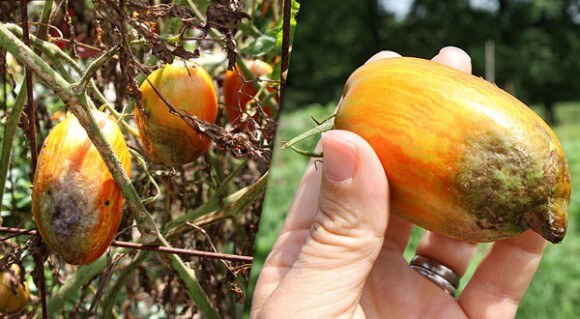
Tomatoes with oily patches and plants with stem lesions and browning leaves – it’s not what a tomato grower wants to see because these are the telltale signs and symptoms of late blight (Phytophthora infestans). Most commonly known for causing the Irish Potato Famine, late blight is spread by a fungus-like pathogen that survives and overwinters on infected plant material. Though it kills tomatoes more slowly than potatoes, it is equally lethal and destroys tomato fruits.
Tomato late blight is a disease that needs a live host plant from year to year, so several methods can be used to avoid it and control its spread if discovered. The first step is to plant healthy plants from reliable growers or seed suppliers. (Nothing is worse than being sold diseased plants!) In the garden, avoid moist soil by planting tomatoes in well-drained, aerated, raised beds and keep plants healthy and vigorous by feeding them with a tomato & vegetable fertilizer. It also helps to encourage air-flow by spacing plants well and keeping them pruned. Rotating crops on a three year cycle will also help keep soil disease-free. Finally, scout for infected plants and immediately remove any infected plant material far away from the garden and compost bin. Be diligent and you can beat late blight.

